MUCHSEE Engineered Wood Flooring Collections are a perfect portfolio featuring the world's finest natural wood materials. Every plank is precisely made and well processed. When you invite it into your home, you bring a piece of the natural world inside, and you benefit from the best it has to offer: simple, clean lines, the basis for refined decorative styles and comfortable atmosphere.
Engineered wood flooring has a layered structure: wood top and backing with a strong, stable core made from cross layers of pressed plywood. This structure makes engineered wood flooring a great choice for basements, over concrete subfloors and over radiant heating systems. Depending on top layer thickness, some engineered floors can be sanded and refinished. Engineered construction creates a highly stable core that is less likely to expand, contract or shift when exposed to moisture, humidity and temperature. This makes engineered wood flooring a great option in rooms that are subject to moisture (like basements) or over concrete slab and radiant heating systems.
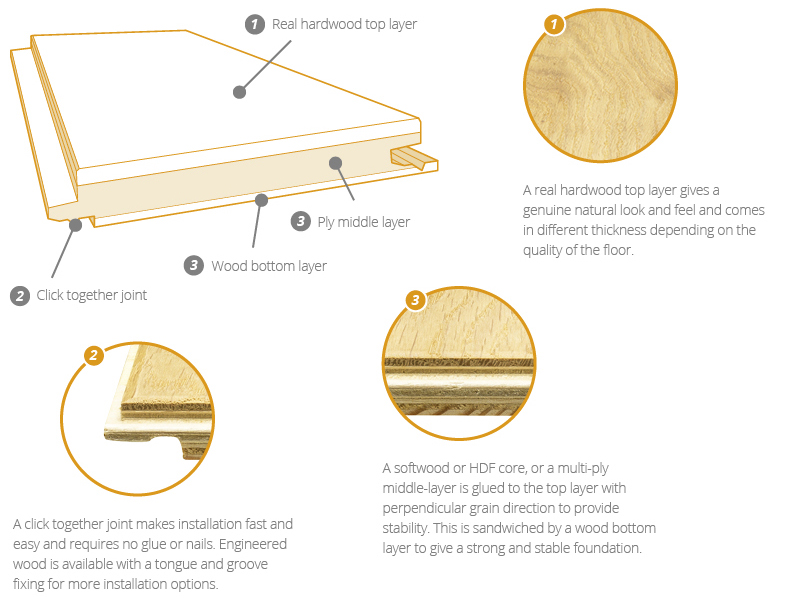
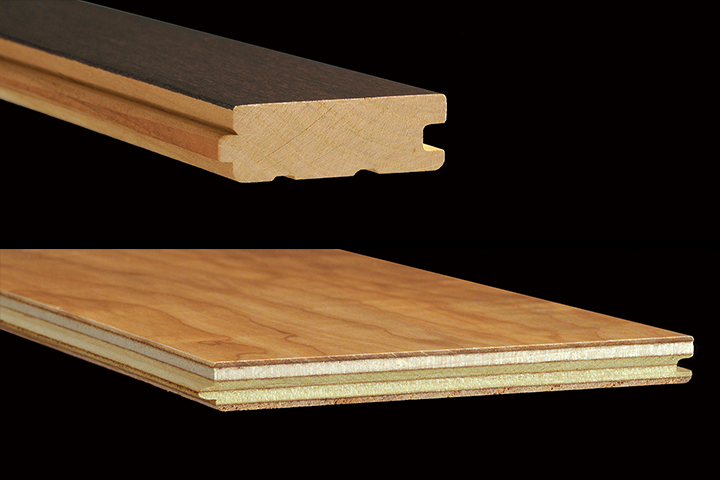 What is the thickness of solid wood vs. engineered wood?
What is the thickness of solid wood vs. engineered wood?Solid Hardwood: Solid hardwood is traditionally 3/4" thick, except for parquet-style floors which are thinner.
Engineered Hardwood: At 3/8” to 1/2", engineered wood is slightly thinner than solid hardwood. Thicker woods are usually available in premium collections. Some engineered floors have a thicker top hardwood layer that allows them to be sanded and refinished several times. Engineered floors can be a good choice if you need a thinner wood for an existing space — for example, to match the height of an adjoining floor or fit kitchen appliances into tight spaces between countertops and floors.
What is the Style of Engineered Hardwood?
Engineered hardwood can offer a variety of style for your home:
1) Available in today’s hottest species; hickory, oak, maple and more.
2) There are multiple finishes available in matte, semi-gloss, and high-gloss.
3) To add visual interest to your floor, engineered hardwood comes in a variety of surface effects such as hand scraped for a time worn appearance, distressed for a slightly rustic appearance, or wire-brushed.
Whether your style ranges from classic to contemporary, you can find a hardwood floor that best suits your home. No matter where in the home you install engineered hardwood, you can be sure it will be a beautiful, eye-catching statement with a durable surface.
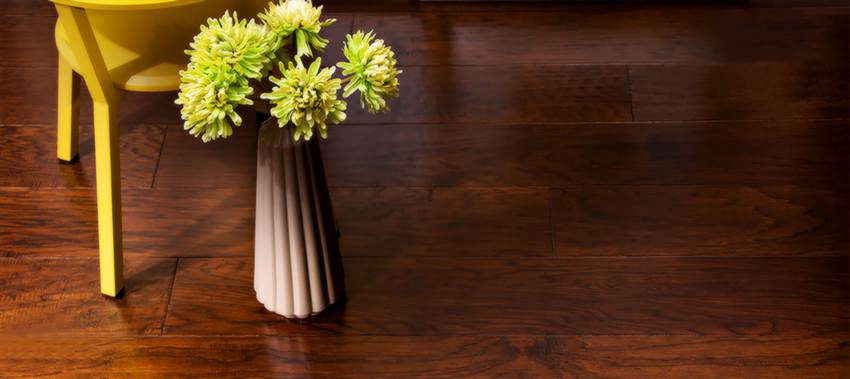
Advantages Of Engineered Wood Flooring
1. It looks just like real wood. One of the great things about the engineered wood flooring that you can buy today is that it looks just like real wood. When engineered wood was first introduced, it was considered by many to be the poor relation to solid wood, but even its harshest critics can’t say the same today. A good quality engineered wood floor will fool even the toughest skeptic into believing that the floor is or could be solid wood.
2. It doesn’t expand and contract to the same extent as solid wood. Aside its great looks, this is arguably one of the most significant advantages of engineered wood flooring over solid wood. Thanks to its clever construction, engineered wood flooring doesn’t expand and contract to the same extent as solid wood. What this means is that it’s safe to lay in environments where solid wood would risk damage. In particular, kitchen and bathroom environments, where moisture levels and temperatures fluctuate enormously, the right engineered wood floor won’t even bat an eyelid.
3. It is extremely durable. Engineered wood flooring is made up of layers and layers of plywood that are bonded together before being topped off with a solid wood lamella or top layer. The making of engineered wood flooring boards in this way means that they are incredibly tough and will stand up to heavy footfall in both domestic and commercial environments.
4. It can be sanded. Although the number of times that engineered wood flooring can be sanded depends on the thickness of the lamella or top layer, there’s no getting away from the fact that engineered wood can be re sanded during its lifetime. Re sanding a floor enables you to bring the floor back to life when it’s looking tired. It is also a good way to get rid of surface staining or marking.
5. It can be refinished. Once you’ve re-sanded your engineered wood floor, you can refinish it to protect it and make it look like new again. What this means is that you are completely free to change the look of your floor every time you re-sand and refinish it, giving you real flexibility.
6. It comes in a whole range of species, grades and finishes. In the same way that solid wood flooring comes in a whole range of species and grades, engineered wood flooring has the same range for its lamellas or top layers. This means that you can achieve the look you want as well as choosing the best finish to suit your lifestyle. Different grades of wood mean that you can adapt your choice to suit your budget too. So, no matter whether you want a tough, lacquered low budget option or an aged, oiled top quality option, the choice is there for you.
7. It lends itself to wider boards. The way wood floor boards are made, in order to achieve a wide solid wood board, you need a seriously big tree. This isn’t the case with engineered wood flooring. Because the core boards are made of plywood, the boards can be made much, much wider than solid wood flooring without breaking the budget. What this means is that you are able to find two or three strip engineered wood flooring that will allow you to have fewer joins across your floor and install your floor in a fraction of the time.
8. It comes in chevron and parquet look. It is becoming more and more common to find engineered wood flooring boards in parquet and chevron styles. What this means is that you can buy boards that already have your desired finished style in place, allowing you to complete a detailed parquet or chevron floor project in next to no time.
9. It's easy to install. Easy to work and quick to lay, engineered wood flooring lends itself perfectly to both DIY and professional installation. In fact there is even a click system, which is even simpler than standard engineered wood flooring for anyone who fancies taking on a project of this nature for the first time.
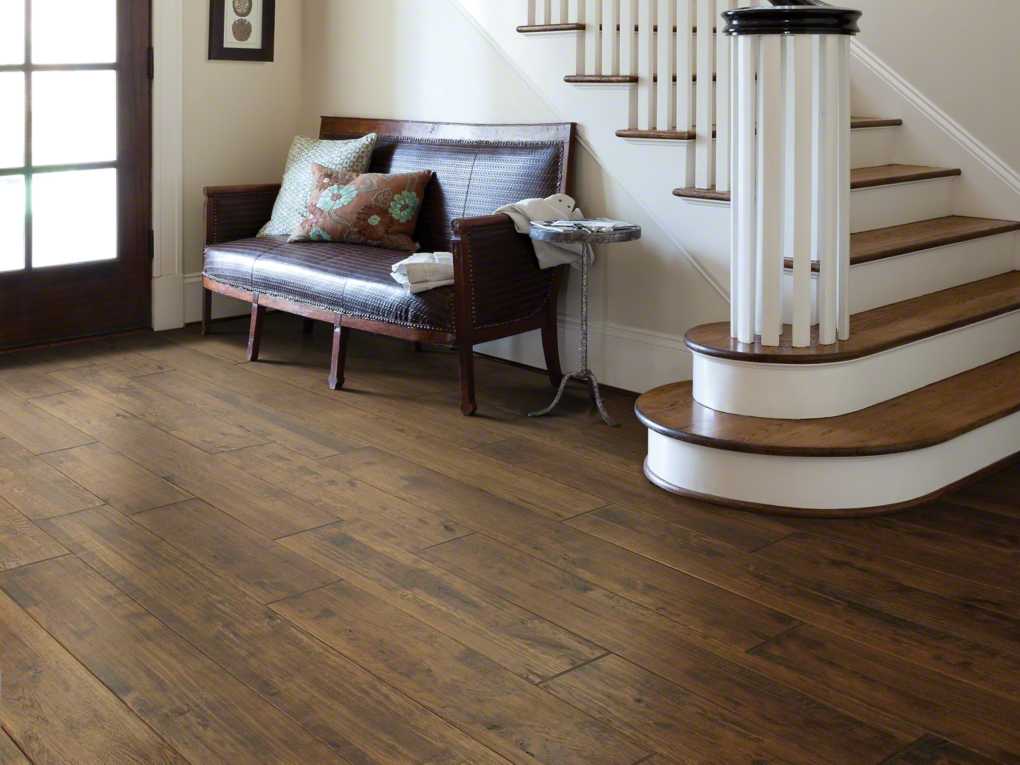
Solid Hardwood: Solid is the gold standard in flooring, and it's usually the most price-premium board for board. There are, of course, many variables: solid hardwood collections can vary in price depending on the warranty, protective finish and how many finishing processes have been used to achieve a particular look. Distressed and scraped styles or those with unique staining techniques will be on the higher end.
Engineered Hardwood: As a whole, engineered tends to be less expensive than solid hardwood, with the exception of premium collections that have a thicker hardwood top layer, uniquely artistic designs and enhanced durability. High-performance engineered products are also more on par with solid pricing.
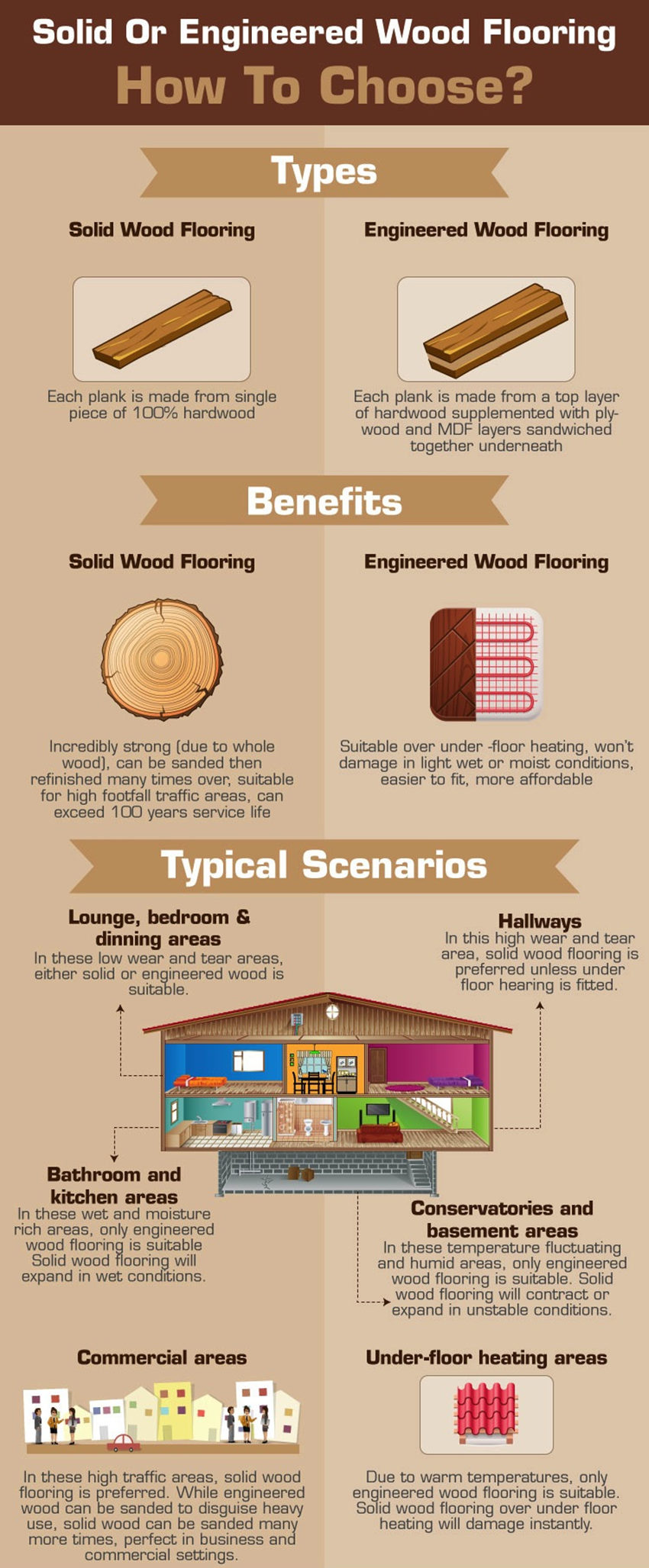

 Wechat: +86-18712015551
Wechat: +86-18712015551
View More(Total0)Comment Lists